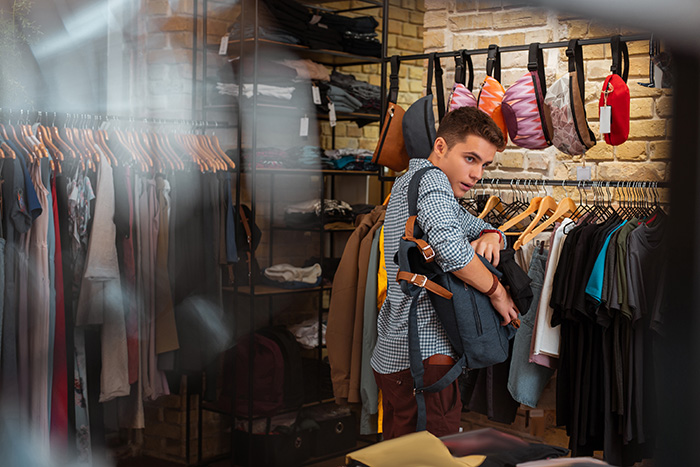Asset Protection Triple Threat – Awareness Prevention Investigation

Tackling Retail’s Biggest Problem with Video Analytics
This fall, the National Retail Federation released their annual National Retail Security Survey which offers a comprehensive view of the state of retail security in the United States and serves as a data-backed catalyst for advancing asset protection measures. While there are many interesting findings in this report, perhaps the most shocking is that retail shrinkage has ballooned into a $1 billion problem for the US retail industry post Covid, a problem that most certainly extends beyond to touch the global retail community as well. Even more alarming, retailers are reporting a 26.5% increase in organized retail crime (ORC) which is a major, dangerous concern for retail locations who need to protect employees and customers as well as their physical assets. Over the past few years, we have seen retailers pivot towards intelligent, data-based asset protection technology to address these findings, and this year, analytics has topped the chart as the number one technology retailers say they need to make their asset protection teams more successful. While many types of analytics can be applied to boost asset protection success, video analytics technology provides retailers with powerful capabilities for both action and strategy with the asset protection triple threat: awareness, prevention, and investigation.
Awareness:
Situational awareness is key for modern asset protection, and video analytics solutions easily increase situational awareness when leveraged with existing video surveillance systems. For instance, with video analytics, security teams can simply configure real-time, rule-based alerts to notify operators of pre-defined suspicious behaviors, such as loitering near high value items or staff-only areas. Upon receiving the alert, an action plan can be determined to resolve the incident quickly and safely.
Furthermore, because security teams can’t realistically observe every camera, every minute – especially when a retail location has dozens, if not hundreds, of cameras – the real-time alerts provided by video analytics elevates critical situational awareness and enables proactive response to suspicious activity. Small things like being notified when an inventory light turns on after hours or a known shoplifting offender is recognized through a face matching watchlist create significant impact in the operational capacity of security teams and in the overall goal of effective asset protection.
Employee theft can also be uniquely addressed by leveraging video analytics at checkout counters. While stores may suspect employee theft based on patterns, such as voided transactions in the point of sales system, it is impossible to build a case without visual evidence to confirm the suspicion. Video analytics technology can be integrated into POS systems to trigger alerts when a transaction is voided without a customer present. This added layer of awareness promotes internal transparency and accountability, while acting as a powerful deterrent to employee theft.
Prevention
Prevention is also critical to modern asset protection, and for some, is arguably the most important. The claim is that when prevention begins as far out as the parking lot, or perimeter of a retail location, incidents are effectively deterred the moment a would-be-criminal arrives, before a threat has escalated to endangerment of people and property. Adding technology like video analytics and license plate recognition to perimeter security solutions not only supports the early identification of suspects but can also deter a crime from occurring in the first place. This first line of defense for loss prevention is especially important to those experiencing an increase in ORC as it keeps danger far from employees and customers.
Video analytics can also support prevention within the retail perimeter. By better understanding in-store traffic trends, retailers can uncover patterns, make plans, and configure alerts for suspicious behaviors, like dwelling and loitering, that will help mitigate shrinkage in the short and long term. For example, if a store is displaying high value items that are known targets for ORC, they can proactively prevent crime first by understanding how customers typically interact with the space and then leveraging that information to set relevant alerts for behavior that occurs outside of the store’s normal patterns, i.e., suspicious behavior.
Investigation
While awareness and prevention are ideal, the reality is that incidents do occur despite our best efforts. But, for retailers who employ video analytics in their asset protection plans, understanding security and safety incidents is much easier. With the ability to accelerate post-event video review and search with extensive filter functionality, video analytics empowers security operators to advance shrinkage, liability, and criminal investigations with speed, accuracy, and insight. For example, if a product was stolen from a display, investigators can filter and search video by applying object class and attribute filters to quickly identify when the product went missing, pinpoint potential perpetrators, and track the path taken to exit the store. In this case, video analytics speeds investigations and increases the probability for successful apprehension of the suspect, while also providing the store with valuable information on security weaknesses which can support the success of long-term asset protection strategy.
Better Together
Asset protection is vital to the success and safety of retail locations everywhere, and awareness, prevention, and investigation capabilities will bolster the success of any asset protection team. But at the end of the day, it is important to remember that retailers can only do so much to deter offenders, especially ORC offenders. Support from local law enforcement is crucial to the protection of retail locations and is only bolstered by including the mutual benefit of strategic video analytics solutions to the partnership. I hope that by next year’s National Retail Security Survey, we will see the impact that video analytics implementation has had on the asset protection efforts of the retail industry.
Signup to receive a monthly blog digest.